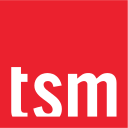Organisation plan of teaching and examinations patterns

Organisation plan of teaching and examinations patterns
In response to the health crisis, the TSM advisory committee has proposed an organisation plan of teaching and examinations patterns during the first semester. The management of the school sent a letter to all students, teachers and administrative staff detailing these measures.
Here follows the text:
Ladies and Gentlemen, Dear Colleagues,
The academic year 2020-2021 has begun in the health situation we all know, the virus continues to spread, and the set of indicators for monitoring the Covid-19 epidemic are increasing. While wearing of masks is generalised, certain preventive measures relating to social distancing are still less systematically adopted, especially outside the University. In higher education institutions, the number of students are now limited to 50% of the maximum capacity of teaching spaces. When a threshold of 10% of confirmed positive cases is observed over a period of 7 days, the concerned programme must move to distance learning for a period of 14 days. Due to the number of courses and the density of our cohorts, there is still some uncertainty about the organisation plan of teaching and examinations patterns during the first semester of the academic year.
The advisory committee has proposed the following long-term organisation plan for the first semester:
1. Bachelor’s levels (L1-L2-L3)
The organisation of the courses follows a principle of alternation for the lectures and the tutorials. Each class is divided into 2 cohorts, thus bringing together only half of the students in the class. While one cohort attends the face-to-face lessons, the other follows the distance learning lessons synchronously at the same time on week A, and vice versa on week B. Half of the promotion is defined as from tutorials groups. The tutorials are made up by language level groups. Half of the promotion results from the addition of half of the students in each tutorial group. Example: A course with 90 students has 3 tutorial groups of 30 students. Half of the class consists of 45 students (15 students from each tutorial group). To take all the lectures and the tutorials, this half of the class alternates one week in the classroom, and one week at a distance learning.
2. Master’s level (1st and 2nd years)
The same principle of alternation applies in the first year of the Master’s programmes as well. Due to the size of the cohort involved, and the pace and specificities of a teaching method that calls on a large number of external contributors, the people in charge of the Master’s programmes are allowed to conduct face-to-face training, subject to strict compliance with the rules and social distancing protocols. However, it is advisable to set up co-modality of teaching to be able to adapt to the students’ situations.
3. Work-study programmes
In view of the specificities of the work-study system, 100% face-to-face teaching can be retained subject to strict compliance with the rules and social distancing protocols.
4. Exams
The choice of exam method, whether face-to-face or distance learning, is up to the programme director. For large numbers of students, it is advisable to choose on-site exams, as this method now offers all the guarantees of social distancing measures and cautions to safe health conditions in the TSM and University premises.
These provisions apply from Monday 12th October for the duration of the first semester.
The administrative officers are implementing the necessary practical measures, particularly in terms of room allocation.
Programmes that have opted for 100% distance, synchronous or asynchronous teaching, retain their choice of organisation of teaching and examinations.
Warmly,
Hervé Penan
Download information in PDF format

Comments0
Please log in to see or add a comment
Suggested Articles


